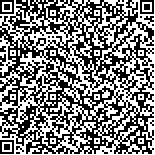Archive > Volume 42 Issue 7 > 2016,42(7):847-856. DOI:10.7519/j.issn.1000-0526.2016.07.008 Prev Next
Effect of Urbanization on Temperature and Diurnal Temperature Range in Pearl River Delta
- Article
- Figures
- Metrics
- Preview PDF
- Reference
- Related
- Cited by
- Materials
Abstract:
Combined with the geographic information data, a data set of 27 stations over the Pearl River Delta Region including all of ordinary and national basic climatological stations was used to analyze the annual and seasonal trend and urbanization effect for mean temperature, mean minimum temperature, mean minimum temperature and diurnal temperature range, respectively. The main results are as follows. In 1963-2012, all the weather stations underwent evident warming in terms of annual mean temperature, annual mean maximum temperature and annual mean minimum temperature, and witnessed significant decrease in annual mean diurnal temperature range except Conghua, Zengcheng, Zhuhai and Shangchuandao. In Guangzhou, Foshan and Huizhou, the contribution of the annual urban warming was positive for the mean temperature and mean maximum temperature. However, the contribution rate of urbanization was negative for the diurnal temperature range, indicating that the reduction of daily temperature range is mainly caused by the urbanization. As for the season, urbanization effect in fall is the strongest. Since the reform and opening policy was implemented, the range of warming areas has become expanded and the strength of warming become much stronger than the counterpart in the recent 50 years in the respect of annual mean temperature, mean maximum temperature and mean minimum temperature. Especially the warming of annual mean maximum temperature is much evident. For the diurnal temperature range, the positive regions have also increased, mainly distributing in northern area of the Pearl River Delta with maximum rate of 0.25 ℃·(10 a)-1. Compared with the situation in the recent 50 years, the annual mean temperature, mean maximum temperature and mean minimum temperature has decreased in Guangzhou while the annual mean temperature and mean minimum temperature has increased in Foshan and Huizhou.
Keywords:
Project Supported:
Clc Number:


Mobile website









